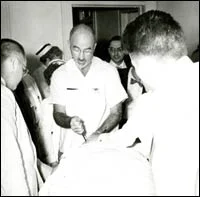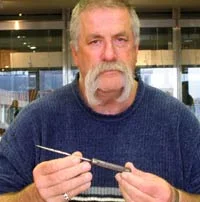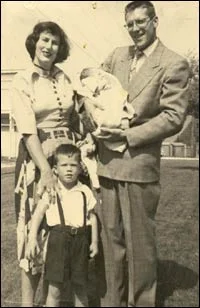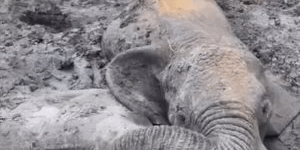In the history of medicine, certain procedures are remembered not for their success, but for the shadows they cast on ethics, human dignity, and the limits of scientific ambition. Among them stands the story of Howard Dully, a twelve-year-old boy who, in December 1960, became one of the youngest patients ever to undergo a transorbital lobotomy—a surgery both shocking and emblematic of a darker chapter in psychiatry.

A Child Caught in Conflict
Howard Dully was not an ordinary boy, nor was he particularly troubled by standards of the time. Teachers described him as mischievous but bright, a boy who sometimes clashed with authority but never posed serious concerns. Yet his stepmother, Lou, insisted that Howard’s behavior was evidence of schizophrenia. While few doctors agreed with her assessment, one man did not turn her away: Dr. Walter Freeman.
Known as the “father of the lobotomy,” Freeman had built both his reputation and his infamy on this controversial operation. By the 1940s and 50s, he had traveled across America, performing lobotomies in hospitals, institutions, and sometimes even office settings. He was not a surgeon by training—he was a neurologist—but his confidence and zeal allowed him to popularize a procedure that involved severing connections in the frontal lobes of the brain, often with devastating consequences.

The Operation
On December 16, 1960, at just twelve years old, Howard was wheeled into the operating room. First, he was rendered unconscious through electroshock. Then Freeman picked up his signature tool: the orbitoclast, a sharp steel rod resembling an ice pick. With practiced precision, he slid the instrument beneath Howard’s eyelid, into the thin bone above the eye socket, and with a mallet tap, broke into the boy’s skull. Freeman repeated the process on both sides, then “swirled” the tool to sever neural pathways believed to control emotion and behavior.
Howard awoke the next morning with no memory of what had been done to him. His body was bruised, his head burned with fever, and his mind felt hollow. “I was like a zombie,” he later recalled. The boy who had entered the hospital would never be the same again.
A Stolen Childhood
The aftermath of the lobotomy was nothing short of tragic. Rather than healing a condition, the procedure stripped Howard of stability and belonging. Within months, he was removed from his family. The years that followed were marked by dislocation and suffering: institutions, group homes, foster placements, even time in prison. Instead of a path to recovery, his life became a cycle of abandonment and alienation.
As he grew older, Howard fought a losing battle against alcoholism and homelessness. He drifted through life, haunted by an unanswerable question: Why did my father let this happen?
Confronting the Past

It wasn’t until decades later, well into his 50s, that Howard began to reclaim his story. With the help of NPR producer David Isay, he accessed Freeman’s archives—thousands of pages of handwritten notes, letters, and patient records. For the first time, Howard saw his own name in Freeman’s meticulous documentation, read the cold clinical justifications that had led to the destruction of his youth.
This exploration of the past became the foundation of a powerful memoir. In 2007, Howard published My Lobotomy, a book that chronicled not only the procedure but the decades of pain, struggle, and resilience that followed. It became a haunting testament to human endurance and a voice for thousands of forgotten lobotomy patients who never lived to tell their stories.
A Life Rebuilt
Against all odds, Howard eventually carved out a life of stability. He found work as a bus driver, married, and became a father. These achievements, though modest by some standards, represented a profound victory for a man who had been stripped of so much. His later years were not defined by the procedure alone, but by his refusal to let it erase his humanity.
Legacy and Questions Unanswered
The story of Howard Dully continues to resonate as a reminder of the dangers of unchecked medical authority and the vulnerability of patients—especially children—caught in the crossfire of ambition, ignorance, and misplaced trust. The transorbital lobotomy, once hailed as a miracle cure, is now regarded as one of the most misguided practices in modern medicine.
Yet for Howard, the central wound was not merely the surgery itself, but the betrayal that made it possible. “Why did my father let this happen?” he asked again and again. No archive, no memoir, no testimony could fully answer that question.
Howard’s life is both a tragedy and an act of survival. It forces us to confront not only the failures of medicine but the fragility of family, and the resilience of a child who endured one of the darkest chapters of psychiatry—and lived to tell the world.


